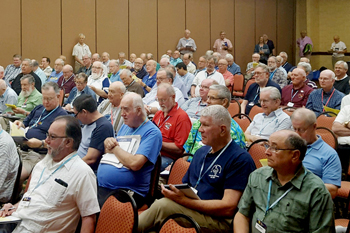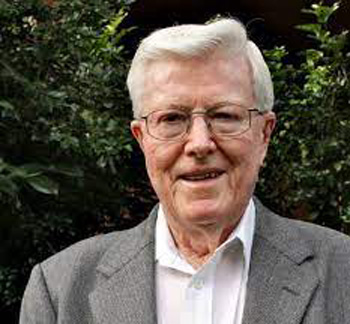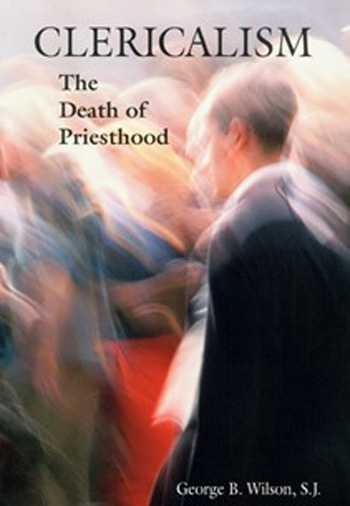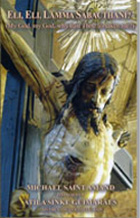Traditionalist Issues
 |
 |
 |
 |
 |
 |
 |
Dialogue Mass - CXXI
More on Anti-Clericalism in the Church
Let us continue to look at examples of clergy who are demanding structural change in the Church to root out clerical “elitism” and give free rein to the laity.
Fr Kevin Clinton
The Association of U.S. Catholic Priests (AUSCP) is one of the many agencies of the liberal theological consensus in the United States, vigorously promoting a reform of the priesthood to enhance the status of the laity, particularly women, in Church structures. Having reached the dizzy heights of being President of its Leadership Team in 2019, Fr. Kevin Clinton evidently felt that he was in a position to promulgate his own “Encyclical” to all the Bishops of the United States, instructing them to eradicate “Clericalism”:
 “We are in crisis. We need change. Please engage all of God’s People in bringing about the needed change. Clericalism most especially must be eradicated, and women must be integrated.” (1)
“We are in crisis. We need change. Please engage all of God’s People in bringing about the needed change. Clericalism most especially must be eradicated, and women must be integrated.” (1)
The implication of this passage is that “Clericalism is the enemy” especially where women are concerned, preventing them from having full access to all ministries in the Church. Although it is not specifically mentioned, we can take it as read that this includes admission to the ordained priesthood.
As for the required changes, Fr. Clinton drew up a handy checklist of “evils” to be eradicated:
Bishop Geoffrey Robinson of Sydney
The former Auxiliary Bishop of Sydney, who resigned in 2004 because he could not accept Catholic doctrine on many issues ‒ among them celibacy, homosexuality, contraception, divorce and women’s ordination ‒ had been, with impunity, a public dissenter from Catholic Faith and Morals even before he became a bishop. He attributed the clergy abuse crisis to the traditional teaching on priestly identity:
 “One of the saddest sights in the Church today is that of some young, newly ordained priests insisting that there is an ‘ontological difference’ between them and laypersons, and enthusiastically embracing the mystique of a superior priesthood. Whenever I see young priests doing this I feel a sense of despair, and I wonder whether we have learned anything at all from the revelations of abuse.” (3)
“One of the saddest sights in the Church today is that of some young, newly ordained priests insisting that there is an ‘ontological difference’ between them and laypersons, and enthusiastically embracing the mystique of a superior priesthood. Whenever I see young priests doing this I feel a sense of despair, and I wonder whether we have learned anything at all from the revelations of abuse.” (3)
But this makes no Catholic sense, for it is the sacred "character" conferred at the Sacrament of Ordination, through which the priest is configured to Christ, which makes him fundamentally different from the non-ordained members of the Church. It is also a point of Catholic doctrine that the Sacrament confers supernatural powers denied to the layman, which marks the ordained priesthood as superior to the lay state and requires a higher degree of holiness in the priest. Furthermore, if accepted with faith, the graces infused in the Sacrament of Ordination provide a barrier against clerical abuse, which is more likely to be committed by priests who neglect or reject the essential distinction.
Fr. George Wilson, S.J.
Fr. Wilson’s agenda in eradicating “Clericalism” could not be more radical. In Clericalism: The Death of Priesthood, he calls upon the laity to bring about the “declericalization of the Church of the future” and to “overcome the destructive superior-inferior mindset which bedevils us in all our relationships” including “the relationship of the laity to their pastors.” (4) It contains all the basic ideas of the “inverted triangle” ecclesiology promoted by Vatican II that are still current in theological discourse, as evidenced by the comments and speeches of Pope Francis.
 In order to understand what motivated Fr. Wilson’s criticism of so-called “Clericalism,” we need to know something of his ideological background. He worked for over 30 years as an organizational consultant at Management Design Inc. (MDI) of Cincinnati, an institute that specialized in creative business, leadership techniques and problem-solving skills in organizations.
In order to understand what motivated Fr. Wilson’s criticism of so-called “Clericalism,” we need to know something of his ideological background. He worked for over 30 years as an organizational consultant at Management Design Inc. (MDI) of Cincinnati, an institute that specialized in creative business, leadership techniques and problem-solving skills in organizations.
Although the MDI had no competence in Church matters, Fr. Wilson used its services in 1980 in an attempt to solve a problem in the Diocese of Baton Rouge which was under the authority of Bishop Joseph Sullivan.
The Bishop, a strong supporter of Humanae Vitae, was facing serious opposition from some dissident priests who rejected it, and Fr. Wilson saw an opportunity for his firm to intervene and undermine the Bishop’s authority in his Diocese. As expected, Fr. Wilson (and MDI) not only took the side of the dissenters, but used the publicity generated by the dispute to call on Bishop Sullivan to resign over the issue. (5)
Bishop Thomas Zinkula of Davenport
Bishop Zinkula offered the following hackneyed definition of “Clericalism” in 2018:
“Clericalism is an exaggeration of the role of the clergy to the detriment of the laity. In a culture of clericalism, clerics are put on a pedestal and the laity are overly deferential and submissive to them.” (6)
 No one can fail to notice the hostility expressed by the Bishop – and he is not alone – towards the hieratic distinction between the priest and the people as reflective of the divinely-willed order of the Church. The great reverence towards the priest that characterized the Church of all ages is now ridiculed not only as an “exaggeration” but also, incredibly, as detrimental to the laity.
No one can fail to notice the hostility expressed by the Bishop – and he is not alone – towards the hieratic distinction between the priest and the people as reflective of the divinely-willed order of the Church. The great reverence towards the priest that characterized the Church of all ages is now ridiculed not only as an “exaggeration” but also, incredibly, as detrimental to the laity.
Let us contrast this with the injunctions of the Council of Trent which ordered “due reverence toward the clergy, parish priests and the higher orders” from “the Emperor, Kings, States, Princes … and all their own subjects.” (7) This clearly places the clerical estate on a higher plane than all social categories, no matter how exalted.
It naturally follows that special reverence is due to the clergy because of the sacred “character” conferred at Ordination and the consequent authority with which they are endowed. But for Bishop Zinkula and the progressivists he represents, this is part of the dreaded “culture of clericalism” which must be uprooted from the hearts of the faithful.
What is really to the detriment of the laity is that the reformers have uprooted a precious virtue from the hearts of the faithful – the humility to recognize their dependence on a higher authority placed over them by divine ordinance.
As all acts of deference towards the clergy are outward signs of humility before God, they can hardly be “excessive”; and by describing them as such, Bishop Zinkula discourages the laity from doing homage to God in their relationship with His ordained ministers. It was not “Clericalism” but Vatican II’s exaltation of the laity that encouraged this drift away from personal holiness.
Cardinal Cupich, Archbishop of Chicago
In his article from the July 10, 2019, Chicago Catholic, Card. Blase Cupich went on the offensive against the traditional concept of the priesthood which, since Vatican II, was commonly – and falsely – described as “Clericalism.” To achieve his objective, he enlisted the help of the Archdiocesan Women’s Committee to pass judgement on the so-called “patriarchal culture” of the Church. He said:
 “Last year, I asked the Archdiocesan Women’s Committee, which is part of the Archdiocesan Pastoral Council, to offer their insights, after consulting with women in their parishes, about how they experience clericalism. … Their insights helped me to prepare a talk that I gave to a group of priests last month in St. Louis. … I challenged priests to take the lead in combating any form of elitism in their ranks, first of all by being in touch with their baptism.”(8)
“Last year, I asked the Archdiocesan Women’s Committee, which is part of the Archdiocesan Pastoral Council, to offer their insights, after consulting with women in their parishes, about how they experience clericalism. … Their insights helped me to prepare a talk that I gave to a group of priests last month in St. Louis. … I challenged priests to take the lead in combating any form of elitism in their ranks, first of all by being in touch with their baptism.”(8)
It is obvious that he had set up a Kangaroo court consisting of women to declare the male priesthood guilty of “Clericalism.” The verdict, of course, was already predetermined, and only needed to be rubber-stamped by the Cardinal in his summing up. Justice, it seemed would only be done for women by “empowering their long-ignored voices,” and by “ending the treatment of clergy as a privileged caste” on the grounds that they are only “fallible men who share our human condition” – in other words, essentially no different from anyone else. Not even their Ordination had any higher significance than the “priesthood of all the baptized.”(9)
Bishop Charles Drennan of Palmerston North
Bishop Drennan, who was General Secretary of the New Zealand Bishops’ Conference, weighed into the debate with comments that could be described as abusive:
“Clericalism is the appropriation by a clerical caste of what is proper to all the baptized. More simply put, it’s a club mentality that renders the baptized subservient to preening priests. I loathe clericalism. It makes me shudder. It’s a hangover from tribal forms of priesthood ‒ where castes were set aside for temple service ‒ found in the Old Testament, and which morphed into a culture of ‘superiority’ or entitlement, or as Jesus himself put it: ‘lording it over others’. (Matt 20:25; 1 Pet 5:3)” (10)
 In his Commentary on the Gospels, St. Thomas Aquinas, quoting from the Church Fathers, explained the true meaning of “lording it over others”: it was an admonition against those who “seek after precedence,” as with the “rulers of the Gentiles,” for reasons of vain-glory:
In his Commentary on the Gospels, St. Thomas Aquinas, quoting from the Church Fathers, explained the true meaning of “lording it over others”: it was an admonition against those who “seek after precedence,” as with the “rulers of the Gentiles,” for reasons of vain-glory:
“Let not him that is chief be puffed up by his dignity, lest he fall away from the blessedness of humility.”(11)
The Gospel passage in question shows that inequality existed between higher and lower strata in the early Christian community, and that it was approved by Our Lord – provided that the superior authority was exercised with the virtue of humility. (12)
The next part of Bishop Drennan’s diatribe against “Clericalism” took the form of a string of derogatory labels ‒ “misogyny, sexism, bullying, racism, paternalism” and especially “misogyny parading as theological orthodoxy.”
By applying these to traditional methods of Church leadership, he was setting the stage for a total upheaval of the Church’s constitution in which governance would no longer be the preserve of the Hierarchy: “So much ordinary leadership as well as formal governance in the Church has been tied to ordination and thus to priests and Bishops. … Fresh theological study of baptism as a source of or, better put, call to leadership is already underway. We do not need to wait for its conclusions before we bring about change.” (13)
He quoted Pope Francis as a supporter of these views.
Continued
Fr Kevin Clinton
The Association of U.S. Catholic Priests (AUSCP) is one of the many agencies of the liberal theological consensus in the United States, vigorously promoting a reform of the priesthood to enhance the status of the laity, particularly women, in Church structures. Having reached the dizzy heights of being President of its Leadership Team in 2019, Fr. Kevin Clinton evidently felt that he was in a position to promulgate his own “Encyclical” to all the Bishops of the United States, instructing them to eradicate “Clericalism”:

Priests ‒ all dressed like laymen ‒ gather for morning prayer at a AUSCP meeting
The implication of this passage is that “Clericalism is the enemy” especially where women are concerned, preventing them from having full access to all ministries in the Church. Although it is not specifically mentioned, we can take it as read that this includes admission to the ordained priesthood.
As for the required changes, Fr. Clinton drew up a handy checklist of “evils” to be eradicated:
- The hierarchical and patriarchal structure of the Church;
- Papal allegiance;
- An ordination said to confer an ontological change;
- Special and separate education and training;
- Celibacy requirements;
- Clothing and dress ‒ especially liturgical dress;
- Special privileges concerning income and lifestyle not available to the laity. (2)
Bishop Geoffrey Robinson of Sydney
The former Auxiliary Bishop of Sydney, who resigned in 2004 because he could not accept Catholic doctrine on many issues ‒ among them celibacy, homosexuality, contraception, divorce and women’s ordination ‒ had been, with impunity, a public dissenter from Catholic Faith and Morals even before he became a bishop. He attributed the clergy abuse crisis to the traditional teaching on priestly identity:

Bishop Robinson: ‘no difference between priests & laymen’
But this makes no Catholic sense, for it is the sacred "character" conferred at the Sacrament of Ordination, through which the priest is configured to Christ, which makes him fundamentally different from the non-ordained members of the Church. It is also a point of Catholic doctrine that the Sacrament confers supernatural powers denied to the layman, which marks the ordained priesthood as superior to the lay state and requires a higher degree of holiness in the priest. Furthermore, if accepted with faith, the graces infused in the Sacrament of Ordination provide a barrier against clerical abuse, which is more likely to be committed by priests who neglect or reject the essential distinction.
Fr. George Wilson, S.J.
Fr. Wilson’s agenda in eradicating “Clericalism” could not be more radical. In Clericalism: The Death of Priesthood, he calls upon the laity to bring about the “declericalization of the Church of the future” and to “overcome the destructive superior-inferior mindset which bedevils us in all our relationships” including “the relationship of the laity to their pastors.” (4) It contains all the basic ideas of the “inverted triangle” ecclesiology promoted by Vatican II that are still current in theological discourse, as evidenced by the comments and speeches of Pope Francis.

Fr. Wilson openly proclaims the death of the priesthood
Although the MDI had no competence in Church matters, Fr. Wilson used its services in 1980 in an attempt to solve a problem in the Diocese of Baton Rouge which was under the authority of Bishop Joseph Sullivan.
The Bishop, a strong supporter of Humanae Vitae, was facing serious opposition from some dissident priests who rejected it, and Fr. Wilson saw an opportunity for his firm to intervene and undermine the Bishop’s authority in his Diocese. As expected, Fr. Wilson (and MDI) not only took the side of the dissenters, but used the publicity generated by the dispute to call on Bishop Sullivan to resign over the issue. (5)
Bishop Thomas Zinkula of Davenport
Bishop Zinkula offered the following hackneyed definition of “Clericalism” in 2018:
“Clericalism is an exaggeration of the role of the clergy to the detriment of the laity. In a culture of clericalism, clerics are put on a pedestal and the laity are overly deferential and submissive to them.” (6)

Bishop Zinkula, in forefront, in a ‘pastoral visit to the peripheries’
Let us contrast this with the injunctions of the Council of Trent which ordered “due reverence toward the clergy, parish priests and the higher orders” from “the Emperor, Kings, States, Princes … and all their own subjects.” (7) This clearly places the clerical estate on a higher plane than all social categories, no matter how exalted.
It naturally follows that special reverence is due to the clergy because of the sacred “character” conferred at Ordination and the consequent authority with which they are endowed. But for Bishop Zinkula and the progressivists he represents, this is part of the dreaded “culture of clericalism” which must be uprooted from the hearts of the faithful.
What is really to the detriment of the laity is that the reformers have uprooted a precious virtue from the hearts of the faithful – the humility to recognize their dependence on a higher authority placed over them by divine ordinance.
As all acts of deference towards the clergy are outward signs of humility before God, they can hardly be “excessive”; and by describing them as such, Bishop Zinkula discourages the laity from doing homage to God in their relationship with His ordained ministers. It was not “Clericalism” but Vatican II’s exaltation of the laity that encouraged this drift away from personal holiness.
Cardinal Cupich, Archbishop of Chicago
In his article from the July 10, 2019, Chicago Catholic, Card. Blase Cupich went on the offensive against the traditional concept of the priesthood which, since Vatican II, was commonly – and falsely – described as “Clericalism.” To achieve his objective, he enlisted the help of the Archdiocesan Women’s Committee to pass judgement on the so-called “patriarchal culture” of the Church. He said:

Card. Cupich: ‘Francis is giving new life to Vatican II reforms’
It is obvious that he had set up a Kangaroo court consisting of women to declare the male priesthood guilty of “Clericalism.” The verdict, of course, was already predetermined, and only needed to be rubber-stamped by the Cardinal in his summing up. Justice, it seemed would only be done for women by “empowering their long-ignored voices,” and by “ending the treatment of clergy as a privileged caste” on the grounds that they are only “fallible men who share our human condition” – in other words, essentially no different from anyone else. Not even their Ordination had any higher significance than the “priesthood of all the baptized.”(9)
Bishop Charles Drennan of Palmerston North
Bishop Drennan, who was General Secretary of the New Zealand Bishops’ Conference, weighed into the debate with comments that could be described as abusive:
“Clericalism is the appropriation by a clerical caste of what is proper to all the baptized. More simply put, it’s a club mentality that renders the baptized subservient to preening priests. I loathe clericalism. It makes me shudder. It’s a hangover from tribal forms of priesthood ‒ where castes were set aside for temple service ‒ found in the Old Testament, and which morphed into a culture of ‘superiority’ or entitlement, or as Jesus himself put it: ‘lording it over others’. (Matt 20:25; 1 Pet 5:3)” (10)

Bishop Drennan: ‘I loathe clericalism’
“Let not him that is chief be puffed up by his dignity, lest he fall away from the blessedness of humility.”(11)
The Gospel passage in question shows that inequality existed between higher and lower strata in the early Christian community, and that it was approved by Our Lord – provided that the superior authority was exercised with the virtue of humility. (12)
The next part of Bishop Drennan’s diatribe against “Clericalism” took the form of a string of derogatory labels ‒ “misogyny, sexism, bullying, racism, paternalism” and especially “misogyny parading as theological orthodoxy.”
By applying these to traditional methods of Church leadership, he was setting the stage for a total upheaval of the Church’s constitution in which governance would no longer be the preserve of the Hierarchy: “So much ordinary leadership as well as formal governance in the Church has been tied to ordination and thus to priests and Bishops. … Fresh theological study of baptism as a source of or, better put, call to leadership is already underway. We do not need to wait for its conclusions before we bring about change.” (13)
He quoted Pope Francis as a supporter of these views.
Continued
- Kevin Clinton, Letter to the US Bishops, June 4, 2019.
- K. Clinton and Donna Doucette, Confronting the Systemic Dysfunction of Clericalism, a paper presented at the AUSCP in June 2019.
- G. Robinson, For Christ’s Sake: End Sexual Abuse in the Catholic Church ... For Good, Melbourne: John Garratt Publishing, 2013, pp. 83-84.
- George B. Wilson, Clericalism: The Death of Priesthood, Collegeville, Liturgical Press, 2008, p. 145.
- Thomas J. Barbarie, “MDI leader was Curran ally in Humanae Vitae dissent,” The Catholic Commentator (the official newspaper for the Diocese of Baton Rouge), vol. 18, n. 7, February 13, 1980. Fr. Wilson was one of hundreds of priests, including the moral theologian, Fr. Charles Curran, who had signed a 1968 statement of opposition to Humanae Vitae.
- Thomas Zinkula, “Bishop Addresses Issue of Clericalism,” The Catholic Messenger, the newspaper of the Diocese of Davenport, September 20, 2018.
- Council of Trent, Session XXV, Chapter XX, On Reformation.
- Blase Cupich, “Clericalism: an Infection that Can Be Cured,” July 10, 2019.
- Blase Cupich, “Archdiocesan Women’s Committee responds to the issue of clericalism,” ibid., September 4, 2019.
- Charles Drennan, “Clericalism & Governance,” Diocese of Palmerston North website.
- Thomas Aquinas, Catena Aurea, Commentary on the Gospels, St. Luke, Collected out of the Works of the Fathers, Oxford and London: James Parker & Co., 1874, vol. 2, p. 710.
- Ironically, Bishop Drennan himself was not averse to a spot of “lording it over others,” which led to his undoing in the Diocese. In October 2019, he resigned after an accusation of “inappropriate behavior” of a sexual nature with a young woman. Card. John Dew, the Metropolitan Archbishop of New Zealand, made a statement to the Media to the effect that, after an official investigation into the affair, Bishop Drennan was suspended by the Vatican from his pastoral duties as a bishop and required to move out of the Diocese, but that, to the Cardinal’s surprise, he was allowed to retain his title. It transpires that it was not the only allegation against Bishop Drennan of misconduct in office involving a young woman. (New Zealand Herald, October 5, 2019)
- C. Drennan, “Clericalism & Governance,” ibid.
Posted November 21, 2022
______________________
______________________
 Volume I |
 Volume II |
 Volume III |
 Volume IV |
 Volume V |
 Volume VI |
 Volume VII |
 Volume VIII |
 Volume IX |
 Volume X |
 Volume XI |
 Special Edition |